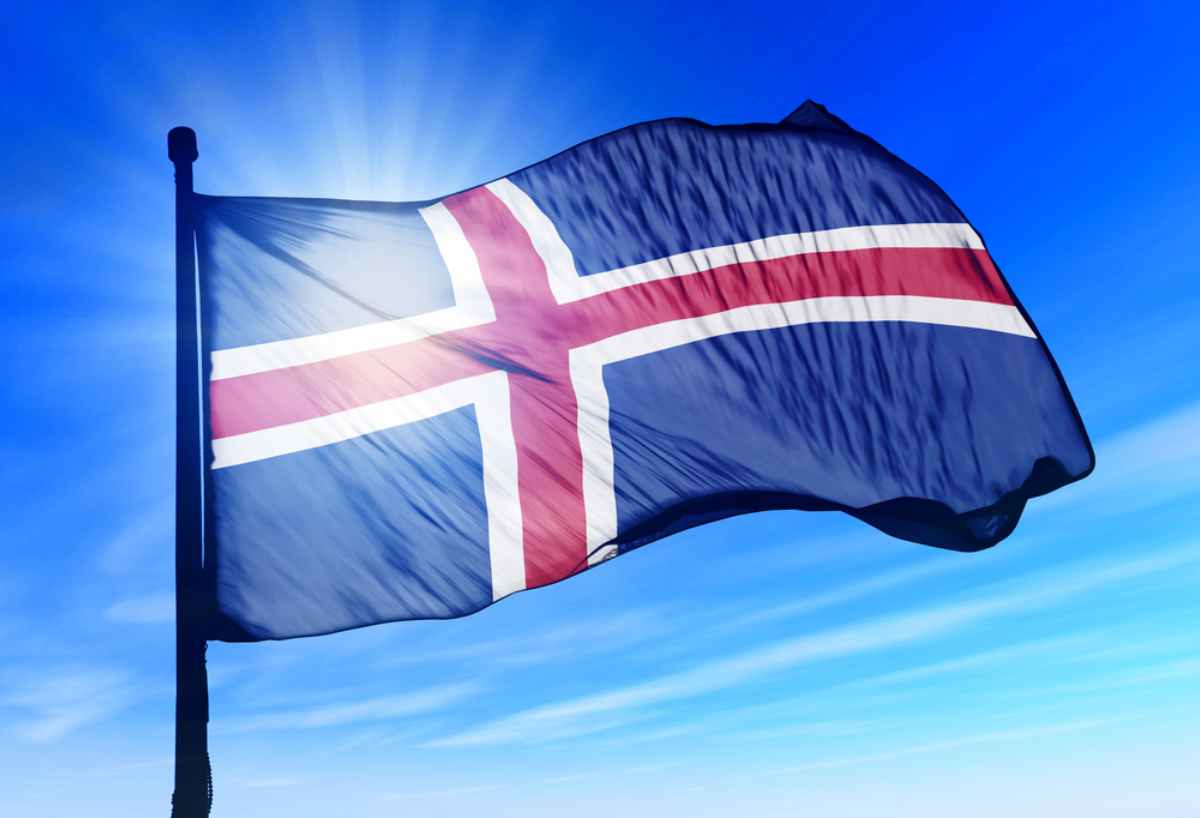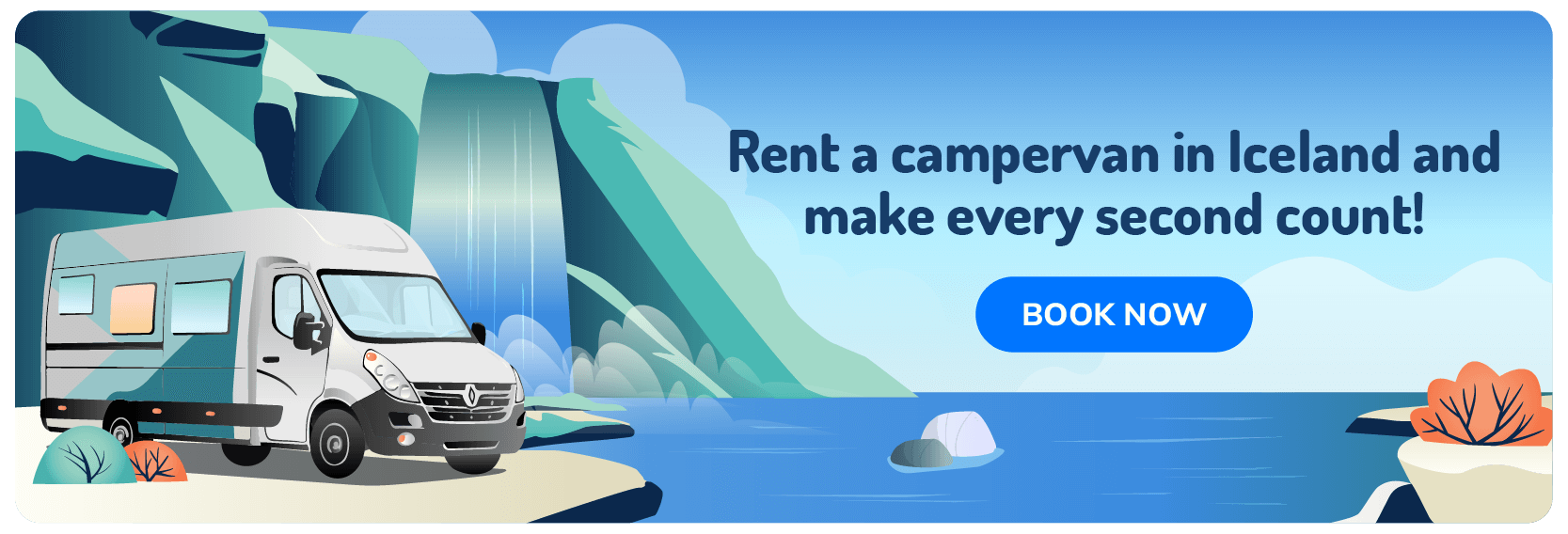Iceland is a truly unique country with its own very particular identity. Being such an isolated nation it has developed a real sense of national identity. This identity is very much connected to the Iceland national flag and likewise to the story behind it. In this blog, we will explore this sense of identity in a little more depth. We will also look into the history of this island nation and the story behind the design of the national flag.
A Brief history of Iceland
On the scheme of things, Iceland is a very young country indeed. It was first settled in the 9th Century by Viking explorers from Norway and Denmark. There is evidence that Irish monks arrived on its wild shores a little earlier than this. However they didn’t stay long on the island. Perhaps it was a little too inhospitable even for them. Can you imagine arriving on this elemental and completely uninhabited isle all those centuries ago!
From the 9th Century onwards a steady trickle of settlers arrived. But not that many! There are still only about 340,000 Icelandic people living in this singular island nation. Iceland remained independent for several centuries but eventually fell under the rule of Norway and then Denmark. There was a growing independence movement throughout the 19th Century. The country eventually gained full independence from Denmark in 1944. Sveinn Björnsson then became the first president of Iceland.
The Flags of Iceland
Seafaring nations have a particular affinity to their flag and this was especially true in centuries gone by. As they sail though territorial waters it is important that a ship flies its national flag. Being entirely surrounded by the Atlantic Ocean Iceland’s national flag design was an important matter. Before independence Icelandic ships sailed under the Danish flag. When Iceland independence finally came there was a great deal of back and forth on the flag design.
The initial idea was to have a blue background with three stock fish arranged in a coat of arms. The design was meant to celebrate the fishing industry on which the country was built and thrived. The idea was quite quickly dismissed as a little two single-tracked. Next came the idea of a blue and white design depicting a white falcon. There was immediately a great deal of opposition to this one. This included the influential voice of the famous poet Einar Benediktsson and the idea was promptly dropped.

In the end the design of a simple Nordic Cross won the day. Many flags in the region and around the world feature a cross. Scandinavian crosses are a little different to their more symmetrical neighbours though. The vertical line is cut slightly to one side so that the arms of the cross fall differently. Various colour combinations were put forward and discussed. Until the final flag design was eventually made official on June 19, 1915.

The double red and white lines of the cross sit on a deep blue background. These colours are symbolic of Iceland’s most important natural wonders. The red represents the fire of the volcanoes. The white is symbolic of the ice of the country’s vast glaciers. And the blue fields represent the North Atlantic Ocean that is so central to the lives of the island’s inhabitants. It is interesting to see how much importance is placed on the natural world in Iceland. This respect and reverence for nature is a hugely significant element of Iceland’s national identity. They are very much bound to their land and to its protection and appreciation.
Icelandic National Identity
So we have established that the Icelandic national identity is very much characterised by an affinity for the natural world. But what other character traits can we associate to the Icelandic people? Of course these are all quite general and there are always exceptions to every generalisation. But here are a couple of points of commonality that you will find many Icelandic people share.
Respect and Equality
Equal rights are very much the norm in Iceland. Gender equality is built into the way of life here. LGBT equality and rights are likewise the norm. In fact the first female to take the prime minister office in 2009 was openly gay. Gender equality in terms of equal pay and representation in business and government is among the highest in the world.
Everyone is a friend
In such a small nation pretty much everyone is connected in some way. There are only around 330,000 inhabitants on the whole of Iceland. So if you don’t know someone then you are more or less guaranteed to know a friend or a relative. Whenever an Icelandic person meets someone new they will spend a good while chatting about their various connections.

Creativity and eccentricity
When it comes to artistic endeavours the Icelandic people are quite prolific. From music to art to fashion they are uniquely creative. Musicians such as Björk and Sigur Rós have taken the world by storm. But there are many more artists and musicians busily creating. If you are interested in artistic pursuits then make sure you drop into local galleries on your trip to Iceland. You could also look out for open mike nights or intriguing small venues where you might see up and coming bands. If you are hiring a camper van you'll have the freedom to choose exactly when and where to stop.
National pride in Iceland
Icelandic people are very proud of their country. You will see the Icelandic flag everywhere and there are regular flag days. This national pride is coupled with a sense of progress and is very outward looking. Young people are very much encouraged to learn other languages and get out and explore the world. At the heart of every Icelandic citizen is a fierce Viking pride in their country.
Friendly and Direct
The Icelandic people are some of the friendliest in the world. They are inclusive in nature and will always switch language to include people in conversation when they can. They will often speak two or three languages or more to a high standard. Some people may find Islanders a little abrupt at times. This does not stem from rudeness though. They often prefer to get straight to the point and are simply being direct.


